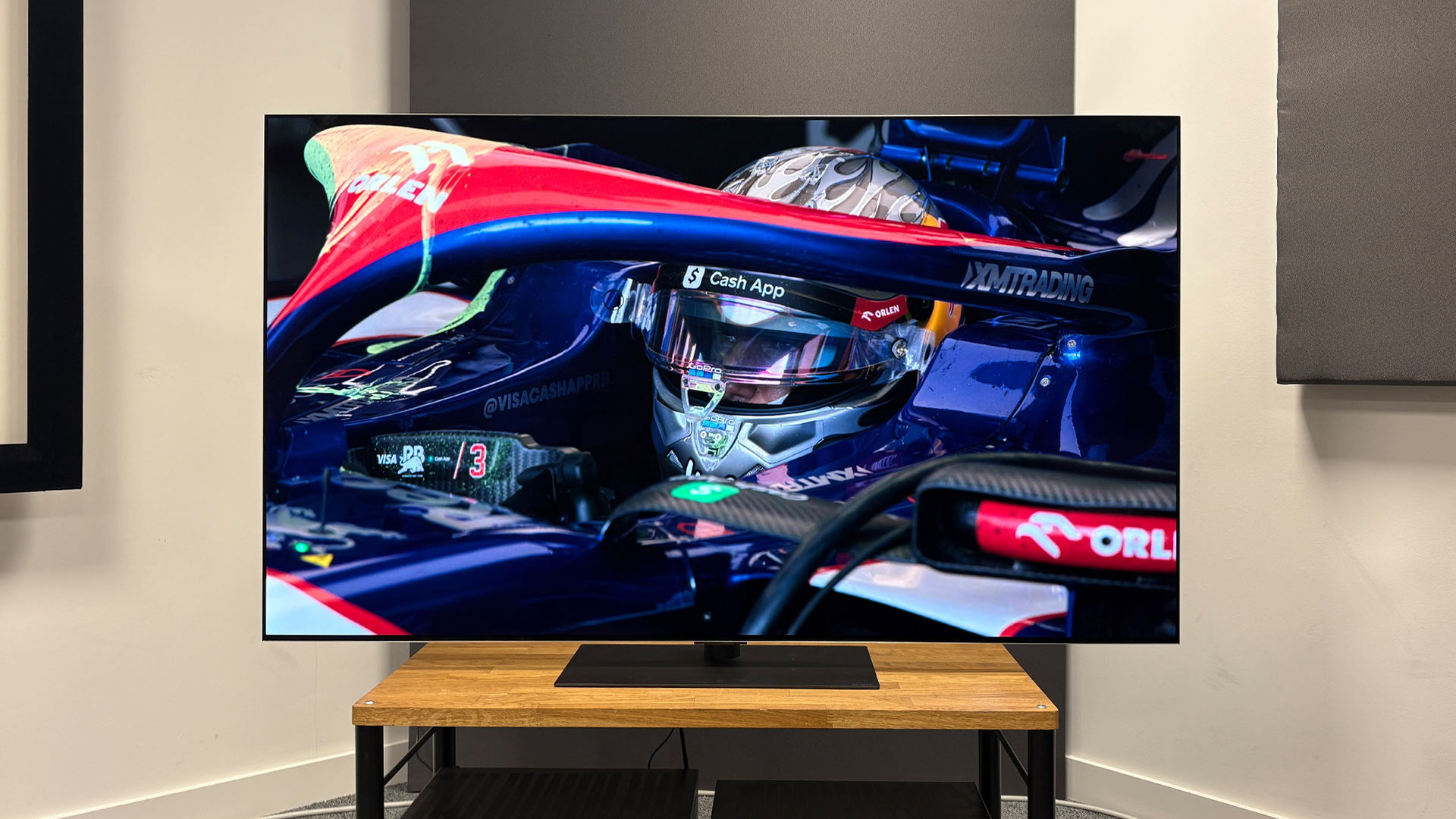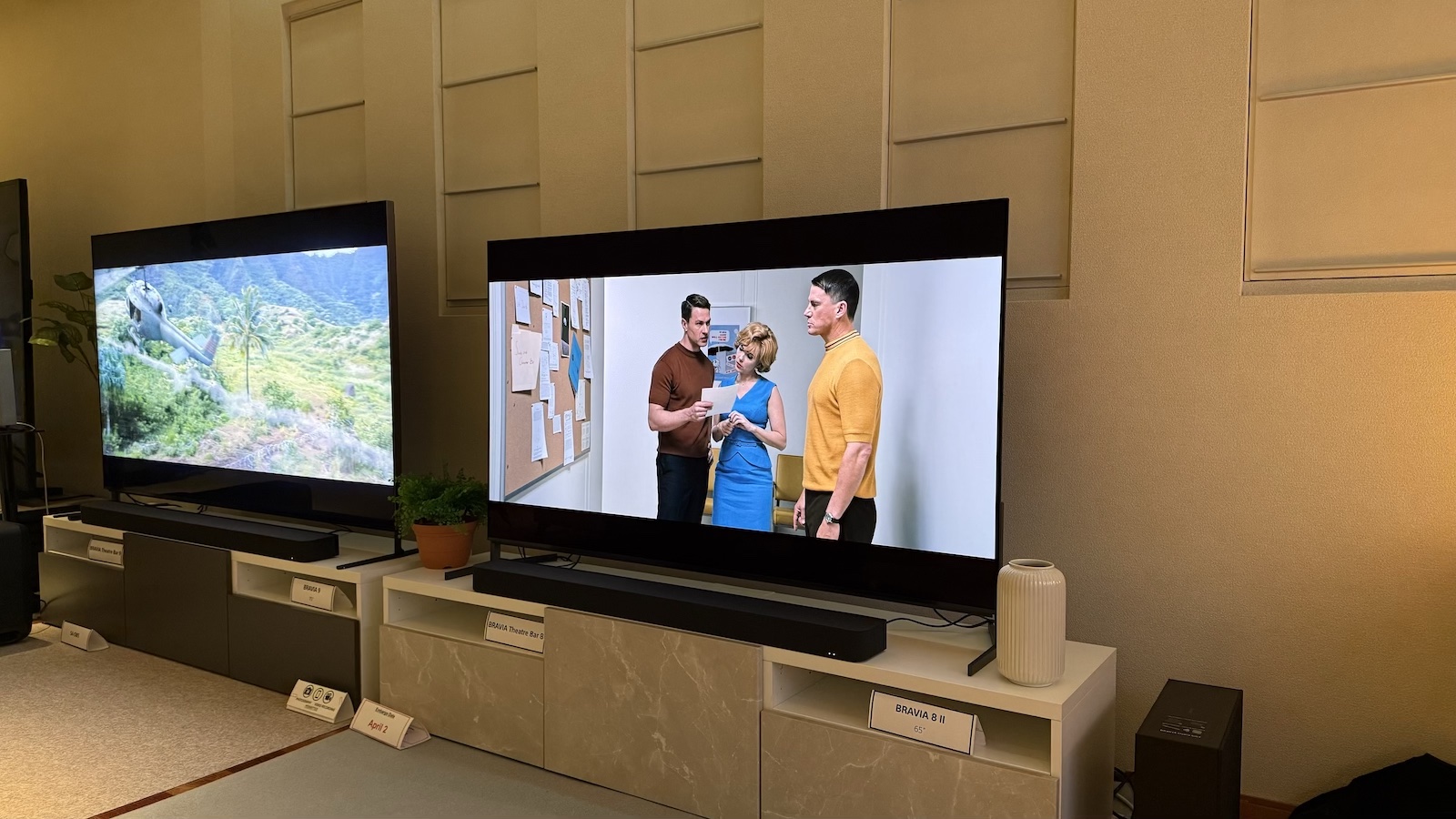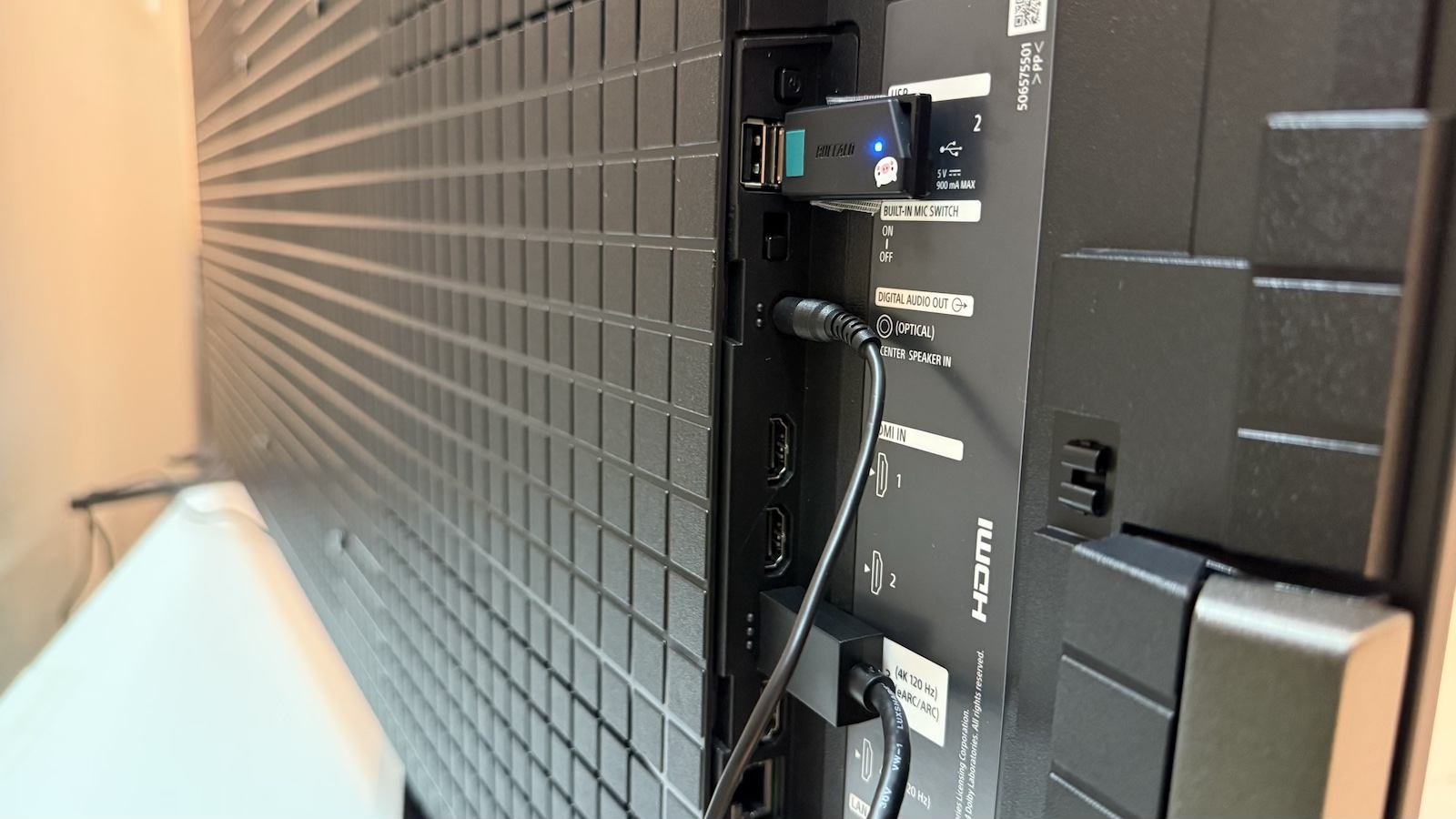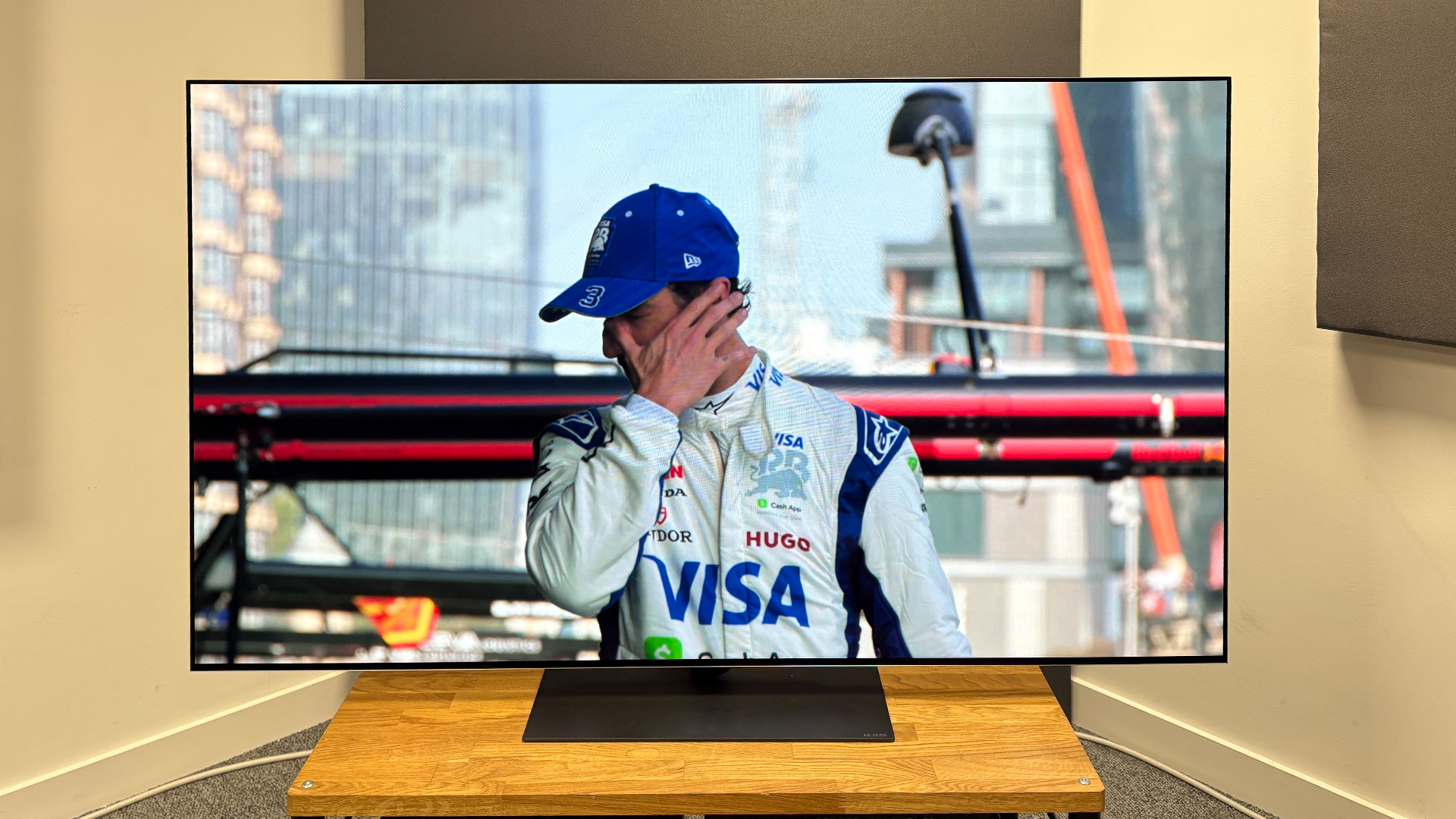LG G5 vs Sony Bravia 8 II: which 2025 OLED TV could be best for you?
We compare two of the most tempting 2025 flagship OLED TVs

Choosing the very best TV in 2025 is a task that’s easier said than done.
With the likes of Sony, Samsung, LG, Philips, Panasonic and more all offering updated flagship models crammed with new tech and the latest features, narrowing down your choices can be tricky.
That’s why we’re comparing the LG G5 against the Sony Bravia 8 II.
Chances are that both new models are on your shortlist if you're looking for a super-premium TV in 2025. New for this year and packing different next-gen OLED panels, they both look very tempting indeed.
Before we crack on, we must point out that while we've fully reviewed the LG G5, we've only had a brief hands-on session with Sony Bravia 8 II in a controlled demonstration environment, so we can't deliver our final verdict on that model yet.
Until we conduct our full, independent review of the Bravia 8 II in our dedicated test rooms, this comparison will be based on our initial impressions and product specs.
We'll update this versus once we've fully put the Sony through its paces, though, so keep an eye out in the near future.
LG G5 vs Sony Bravia 8 II: price, sizes, and release date
The LG G5 is available now, while the Bravia 8 II is launching imminently in the US and in June in the UK.
In the UK, launch prices for the 55-inch versions of each TV are very similar, but the 65-inch Sony is significantly lower priced than the equivalent LG.
It's a very different story in the US, where the Bravia 8 II is vastly more expensive than the G5.
Of course, the launch prices are just the start of the story, and LG's TVs tend to drop in price further and faster than their Sony rivals – though we wouldn't want to assume that will be the case with these models.
It's also worth noting that the LG G5 is available in far more sizes than the Sony Bravia 8 II.
Full launch pricing for both models is in the table below, and below that, you will find the latest deals on the 55-inch versions of each TV.
Screen size (inches) | LG G5 | Sony Bravia 8 II |
|---|---|---|
48 | £1800 / $TBC / AU$TBC | No such model |
55 | £2400 / $2500 / AU$4199 | £2499 / $3500 / AU$TBC |
65 | £3300 / $3400 / AU$5299 | £2999 / $4000 / AU$TBC |
77 | £4500 / $4500 / AU$7999 | No such model |
83 | £7000 / $6500 / AU$9999 | No such model |
97 | £25,000 / $25,000 / AU$TBC | No such model |
LG G5 vs Sony Bravia 8 II: design and build

The LG G5 echoes the design language of previous G-series models, including an incredibly svelte body that’s just 24mm throughout and features a stylish silver trim around its edges.
LG offers the G5 in two versions, too – one with a wall mount for flush fitting (the standard G5), and one with a tabletop stand (the G5S, currently only available in 55-inch and 65-inch sizes in the UK).
The G5's stand can be set to two positions – a low-profile one or a higher position to accommodate a soundbar beneath the screen.
Sony's Bravia 8 II design closely resembles its A95L predecessor, with a relatively conventional, but smart and premium appearance. At 34mm thick, it's a little thicker than the LG G5, but we can’t imagine that being an issue for most people.
The Bravia 8 II also features blade-style feet that can only be positioned at the furthest extremes of the TV's bottom edge. Sony claims this helps prevent reflections, but it also means that the TV requires furniture that's at least as wide as the set itself – 122cm for the 55-inch model and 145cm for the 65-inch version.
While the feet can't be positioned closer to the centre of the chassis, they can, at least, also be extended upward to accommodate a soundbar.
LG G5 vs Sony Bravia 8 II: features and connectivity

Both TVs showcase the latest in their respective OLED technologies. The LG G5 features the new Primary RGB Tandem OLED panel (also known as Four Stack OLED), which comprises four individual OLED layers – two blue, one red and one green – to boost brightness and colour volume. This replaces the Micro Lens Array (MLA) technology used in previous G-series models.
Under the hood, the LG G5 is powered by the new Alpha 11 AI Processor Gen2, which drives AI-backed features such as AI Picture Pro and AI Sound Pro. The processor also supports an AI chatbot for diagnosing and solving TV issues using natural language commands.
Meanwhile, the Sony Bravia 8 II uses the latest QD-OLED panel, combined with Sony's XR Processor featuring AI scene recognition. Sony claims the Bravia 8 II is 25% brighter than its A95L predecessor and 50% brighter than the standard WOLED Bravia 8, with better colour volume and improved dark gradation thrown in for good measure.
For connectivity, the LG G5 offers four full-bandwidth HDMI 2.1 ports, all capable of handling 4K/165Hz (as well as 4K/120Hz) signals with VRR and ALLM.
In contrast, the Sony Bravia 8 II has just two full-bandwidth HDMI 2.1 sockets (in addition to two 2.0 ports), with one of the 2.1 ports doubling as the eARC port.
This may prove to be an annoyance for users who have a soundbar plugged into the eARC port and want to use more than one console/PC with the Bravia 8 II, as they’ll need to faff around using different cables in the remaining sole HDMI 2.1 port if they want to use the highest refresh rates possible.
Both TVs support HDR10, HLG and Dolby Vision, but neither will play ball with HDR10+.
LG G5 vs Sony Bravia 8 II: picture quality

Our review found the G5 to deliver a truly exceptional picture in most scenarios, with dazzling brightness, rich colours and crisp details.
The new Primary RGB Tandem OLED panel allows for substantially increased brightness compared to previous OLED generations, particularly noticeable in peak brightness highlights.
In our testing, the G5 produced blazing bright highlights that at times compelled us to shield our eyes, such as during bright scenes in Top Gun: Maverick.
The G5 also excels in colour reproduction, with enhanced colour volume from the new panel technology. Skin tones are superbly realised, and motion handling is excellent.
When set to the Filmmaker Mode with Cinematic Movement TruMotion, the G5 delivers a smooth, judder-free image that remains natural-looking.
However, we discovered one significant flaw in our G5 review which, at the time of writing, has stopped it from earning a full five stars.
Its handling of streamed Dolby Vision content was problematic, with visible artefacts, patchy image quality, and lifted blacks that appear grey rather than true black. This issue seemed specific to streamed (rather than disc-based) Dolby Vision content.
LG is aware of the issue and has, in fact, recently shared an early version of a G5 software update, which, after some initial testing, appears to have fixed the problem. The scenes we identified as particularly problematic (from Alien: Romulus, Interstellar and No Time to Die) are all now free of the unpleasant blotchiness we uncovered when doing our LG G5 review.
Despite this, we're still holding off on updating the G5's review rating for a few reasons. Firstly, we want to fully retest the TV with the new update to make sure no new issues have been introduced. We also want that testing to be of the publicly available version of the software so we know what we experience is what buyers will also experience at home.
It's also worth noting that since we installed the unreleased software, we have found a new issue that involves grey horizontal bands appearing across content from the built-in Apple TV app. This appears to be related to a separate update applied specifically to that app, however, so we're less concerned about it than the previous problem.
As for our hands-on experience with the Sony Bravia 8 II, it appears to build on the excellent picture quality of the A95L, already considered one of the best TVs on the market.
In Sony's demonstrations, the Bravia 8 II showed noticeably better performance than the A95L, particularly in bright highlights where it maintained better detail and more natural warmth.
In low-light scenes, the Bravia 8 II also showed improved shadow detail and better low-light colour volume compared with rivals. The hues in skin tones and scenery appeared clear, consistent and natural even in the shadiest parts of the picture.
When switched to its brightest preset for HDR demo clips, the Bravia 8 II looked exceptional, with super-reflective, three-dimensional bubble effects and unmatched vibrancy in background colours without appearing unnatural.
While we need to reserve final judgment until full testing in our own conditions, the Bravia 8 II seems to retain the character of the A95L while adding extra pop, crispness and low-light subtlety.
Will that be enough for it to trump the G5 on overall picture quality? We won't know until we've tested the TVs side by side in our dedicated test rooms.
LG G5 vs Sony Bravia 8 II: sound

The LG G5's audio performance is less impressive than its picture quality. In our testing, we found the sound to be middling, even when using the Cinema preset, which offers a wider, louder and punchier sound compared to the Standard setting.
While adequate for day-to-day viewing such as news and quiz shows, the G5's speakers struggle with movies. Bass response is limited, and dialogue can sound lifeless and dull. For a sound experience that matches the G5's picture quality, external audio equipment is recommended.
We haven't had the opportunity to test the Bravia 8 II's audio capabilities, but Sony says it uses the same sound system as the A95L – two actuators and two subwoofers. The A95L's sound system is one of the best built-in TV audio solutions currently available, with the actuators vibrating the screen itself to produce sound that's spatially tied to the on-screen action.
The A95L delivers sound that's direct, detailed and dynamic by TV standards, with a pseudo Atmos effect that extends beyond the TV's physical boundaries. Its one weakness is being somewhat bass-light, which we’re hoping has somehow been remedied in the Bravia 8 II.
Based on our experience with the G5 and Sony's track record, the Bravia 8 II is likely to significantly outperform the LG G5 in terms of built-in audio quality, but we’ll have to wait for our full review to confirm that that’s the case.
LG G5 vs Sony Bravia 8 II: early verdict

Both the LG G5 and Sony Bravia 8 II represent significant advancements in OLED TV technology, each with distinct strengths and weaknesses.
The LG G5 impresses with its dazzling brightness, vibrant colours, and comprehensive gaming features, including four full HDMI 2.1 ports and 4K/165Hz support. Its slimmer design and more flexible stand options also give it an edge in terms of versatility, too.
However, its problematic handling of streamed Dolby Vision content is a significant drawback, and its audio performance is uninspiring. The latter can, of course, be remedied by picking up one of the best soundbars.
Based on our initial impressions, the Sony Bravia 8 II appears to build on the excellent picture quality of the A95L, with improved brightness, better shadow detail, and refined colour reproduction.
Its actuator-based sound system is also likely to deliver superior audio compared to the G5. However, its limited HDMI 2.1 connectivity could be restrictive for gamers with multiple devices, and its thicker design with less flexible stand options may be less practical for some setups.
For now, we can say that both TVs have their merits, with the LG G5 offering superior gaming connectivity and a slimmer design, while the Sony Bravia 8 II appears to have better sound and potentially more refined picture processing.
A definitive verdict will have to wait until we've conducted our full, independent testing of the Bravia 8 II in our test rooms – at which point we'll update this comparison with our final verdict. Stay tuned.
MORE:
Read our full LG G5 review
Check out our Sony Bravia 8 II hands-on review
See our picks for the best TVs you can buy right now
Get the What Hi-Fi? Newsletter
The latest hi-fi, home cinema and tech news, reviews, buying advice and deals, direct to your inbox.

You must confirm your public display name before commenting
Please logout and then login again, you will then be prompted to enter your display name.